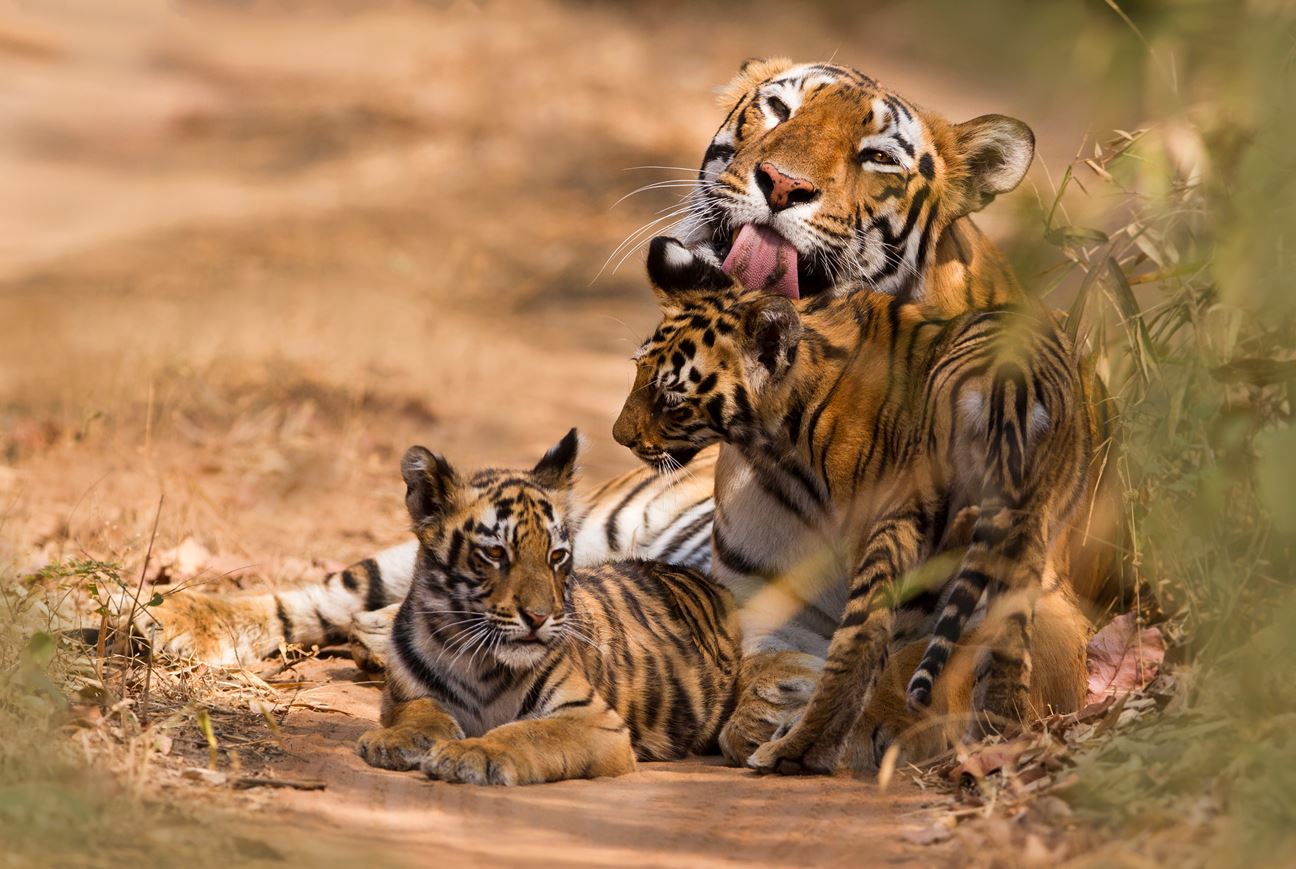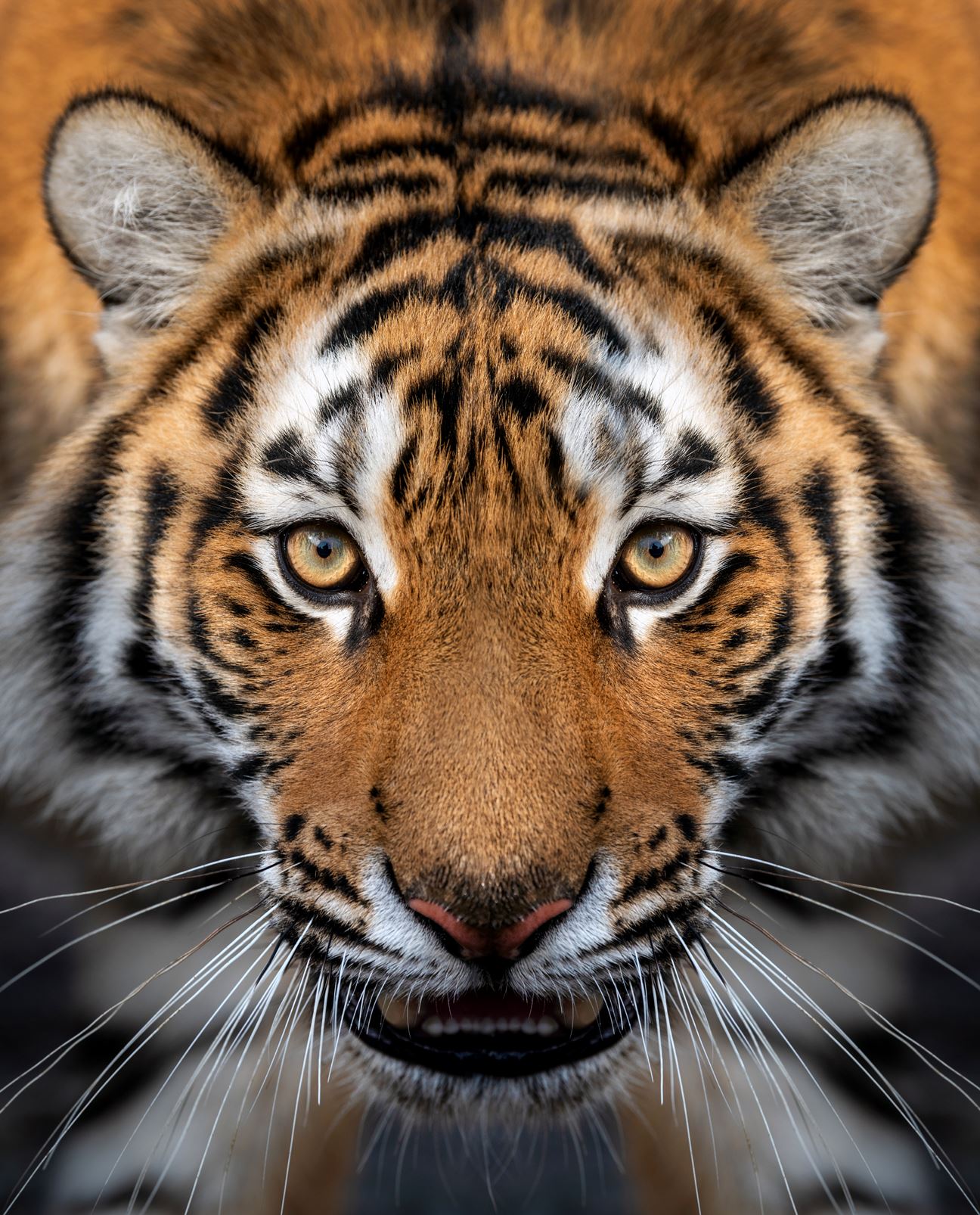Each year on the 29th of July, the world comes together to celebrate the powerful, beautiful, and perfect tigers!
Tigers are impressive in their own way. When a tiger moves, the entire forest responds and for a good reason. They are the forest’s apex predators and keep the population of many other smaller mammals in check. The presence of a tiger is an indicator of a healthy ecosystem. And that has been the case for centuries. As human interference with nature grew, many parts of forests started to die and took the tigers away along with it. So much so that they were on the verge of extinction. Even today, the impressively powerful tiger remains critically endangered. But hopefully, if we learn better and educate those around us, we can give this admirable animal a chance to grow in numbers again.

A Royal Bengal Tiger with her adorable Cubs
Why Celebrate International Tiger Day?
International Tiger Day is celebrated annually on 29th July to raise awareness for tiger conservation across the world. In addition, this day also promotes the need for a global system that aims at protecting the natural habitats of tigers. The International Tiger Day was founded in 2010 when 13 tiger rich countries came together and created Tx2 - a collective goal to increase the global tiger population to twice its number. And it’s working.
So What Do the Numbers Say?
After a consistent decline from 1,00,000 to 3,200, now for the first time in a hundred years, the population of wild tigers is on the rise. From 2010 till now, the number has gone up from an estimated 3,200 to an estimated 3,900. In recent years, the commitment shown by various governments has halted the decline of the tiger population and the conservation work has led to an increase in the tiger population too.
Fun Tiger Facts to Celebrate International Tiger Day:
On this day, one of the many ways to celebrate International Tiger Day is by gathering up your family and friends. You can watch tiger documentaries or set up a quiz. In the end, surprise them with these amazing tiger facts.
- Tigers Are the Largest Cats, and They Are Massive. Let’s Look at Some Stats!
Tigers are the largest living species of the genus Panthera and can be further divided into eight subspecies (Panthera tigris), three of which are now officially extinct. The ones that live on are Indo-Chinese, South China, Amur (or Siberian), Indian (or Bengal), and Sumatran tigers. Of the four big cats in the wild, tigers are the largest. Their huge orange bodies can grow between 1.4 to 2.8 metres in length and can weigh between 100 - 300 kilograms. And a tail that helps them balance can grow between 24 to 45 inches. Their dark vertical stripes are unique to each individual. In the wild, they can be expected to live between 12 to 15 years.
- Tigers Love Water and Are Excellent Swimmers!
 A Siberian tiger attacking its prey
A Siberian tiger attacking its prey
In all the big cat families, tigers are one of the most skilful swimmers. Tigers possess excellent eyesight, which only further helps them hunt better under the water. They do not avoid water but in fact, love water! Tigers are born swimmers and have a natural inclination towards the water. As they grow up, they utilise their swimming habits in several ways - including seeking new territories and hunting. With hunting, tigers are equally stealth and dangerous in the water. When a tiger spots its prey in the water, it will drag down and drown the prey before the final blow. And when they are not hunting, tigers love to lounge in water pools.
- If You Come Face to Face With a Tiger, Look Into Its Eyes. That Way, You Might Have a Chance at Surviving!
Now, this could very well be just an old wives’ tale, but they say if you look the tiger in the eye, the chances of you getting killed are less. Now, if you ever encounter a tiger in the wild, you should slowly move back while maintaining a steady gaze. Tigers prefer to kill by ambush, and by looking into their eyes, you are acknowledging him. This tactic will kill the element of surprise for the tiger, and maybe it will let you go. Remember, cats dislike it when you turn your back on them and take it as a sign of offence.
- Did You Know There Are No Wild Tigers in Africa?
The continent of Africa is synonymous with wildlife. This is a home to elephants, giraffes, lions, hippos, and many more land dominant animals, but surprisingly, no tigers live here. History tells us that the Felidae family of cats with over 35 species like cheetahs, lions, puma, tigers, leopards, jaguars, and the super cute domestic cats, in fact, originated in Africa. But roughly two million years ago, a branch of this family travelled to Asia and never returned. They later evolved into striped predators who, today, sit on the top of the food chain. No one can tell why tigers never returned to Africa. Will the tigers be able to live in Africa given the vast difference between the Asian and African ecosystems? Again, no one knows.
- A Tiger Would Kick a Lion’s Butt in a Fight
While each one of them is majestic in its own ways, did you ever wonder who would win when a tiger and a lion come face to face? Let us compare their strengths and weaknesses. First, the chances of both these cats engaging in a duel in a natural setting are sort of unlikely. But let us assume they do. To begin with, lions can be more aggressive. Whereas tigers will avoid confrontation as much as possible. A lion's thick mane provides a defence against the tiger’s chokehold around the neck. Plus, lions are faster runners than tigers. But tigers have much more physical advantage. Starting with, tigers are much bigger. And second, their bite strength is almost twice that of the lion. So one can pretty much conclude that a tiger would certainly beat a lion when pitched against one another.
- Unlike Some of Their Cousins, Tigers Have Round Pupils

Close up view portrait of a Siberian tiger shows its round pupils
Just like us humans, tigers have eyes with round pupils. Now take your domestic cat, for example, and you will notice that they have pupils that look like vertical slits. This is because cats are nocturnal animals. But tigers, on the other hand, are crepuscular. While they may be active at night, tigers prefer to hunt early morning and late evenings. And their eyes have adapted to doing just that. Tigers may not be best adapted to see in the dark, but still have a vision about 5 times better than humans. Like all other felines, tigers, too, have binocular vision.
- Tigers Cannot Purr, but They Can Roar
They say cats purr when they are happy and content. Purring in cats happens when the tightly connected delicate bones that run from their tongue up to the base of the skull vibrate. The resultant resonating sound is that of a purr. The tough cartilage around their larynx prevents tigers from purring. Rather, when happy, a tiger will chuff or squint its eyes. But this cartilage is flexible enough to produce a terrifying roar or a loud growl! A tiger’s full-throated roar can be heard from as long as 3 kilometres away.
- After Polar Bears, Tigers Have the Largest Brain by Volume Among All the Carnivores
Some studies suggest that the reason for this could be the tiger's solitary nature. Since they do not live in packs or pride, tigers are expected to alone handle all the complexities of social life. A tiger’s brain can weigh an average of 300 grams.
- Tigers Have an Excellent Short Term Memory, Even Better Than Humans
Tigers, in general, are known to have a better memory than other primates. Researchers have discovered that the tiger’s memory is 200 times more retentive than its counterparts. Tigers will remember and take revenge on those who caused them wrong, making them one of the most vengeful animals on the planet. Here's an interesting tragicomic story for you: In the winter of 1997, Russian poacher Vladimir Markov shot and wounded an Amur tiger and later also took away a part of the tiger’s kill. The tiger remembered. He then waited almost 48 hours before following Markov to his cabin and waited for him to come home. Later, the tiger killed Markov and destroyed everything that had Markov’s scent on it. Just goes to tell you to never mess with nature, especially tigers.
There can be no experience more magical than standing in the wild and observing tigers in their beautiful natural habitat. As one of the most intelligent species on earth, humans have a responsibility to protect and conserve these magnificent, fierce big cats. While individually we may not be able to do much, let us all come together and help educate the ones around us. Besides, you do not want to live in a world without tigers, do you?